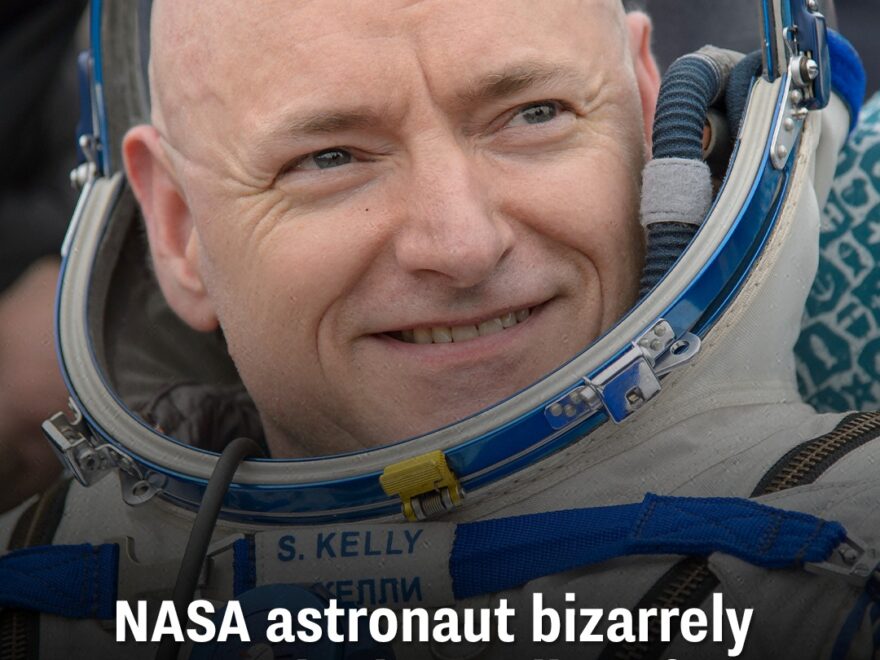Space does some strange things to the human body, but there has been perhaps no stranger occurrence than when one now-retired NASA astronaut somehow grew two whole inches during his stay on the International Space Station (ISS).
If you’ve been following the events of stranded NASA astronauts Butch Wilmore and Suni Williams closely then you’ll know the challenges that they’ve faced with regards to their health.
Photos released last year worried people online as Williams’ appeared to look dangerously thin and unhealthy, and while NASA assured everyone that she was all OK, it certainly drew attention to the strange effects that living in space can cause.
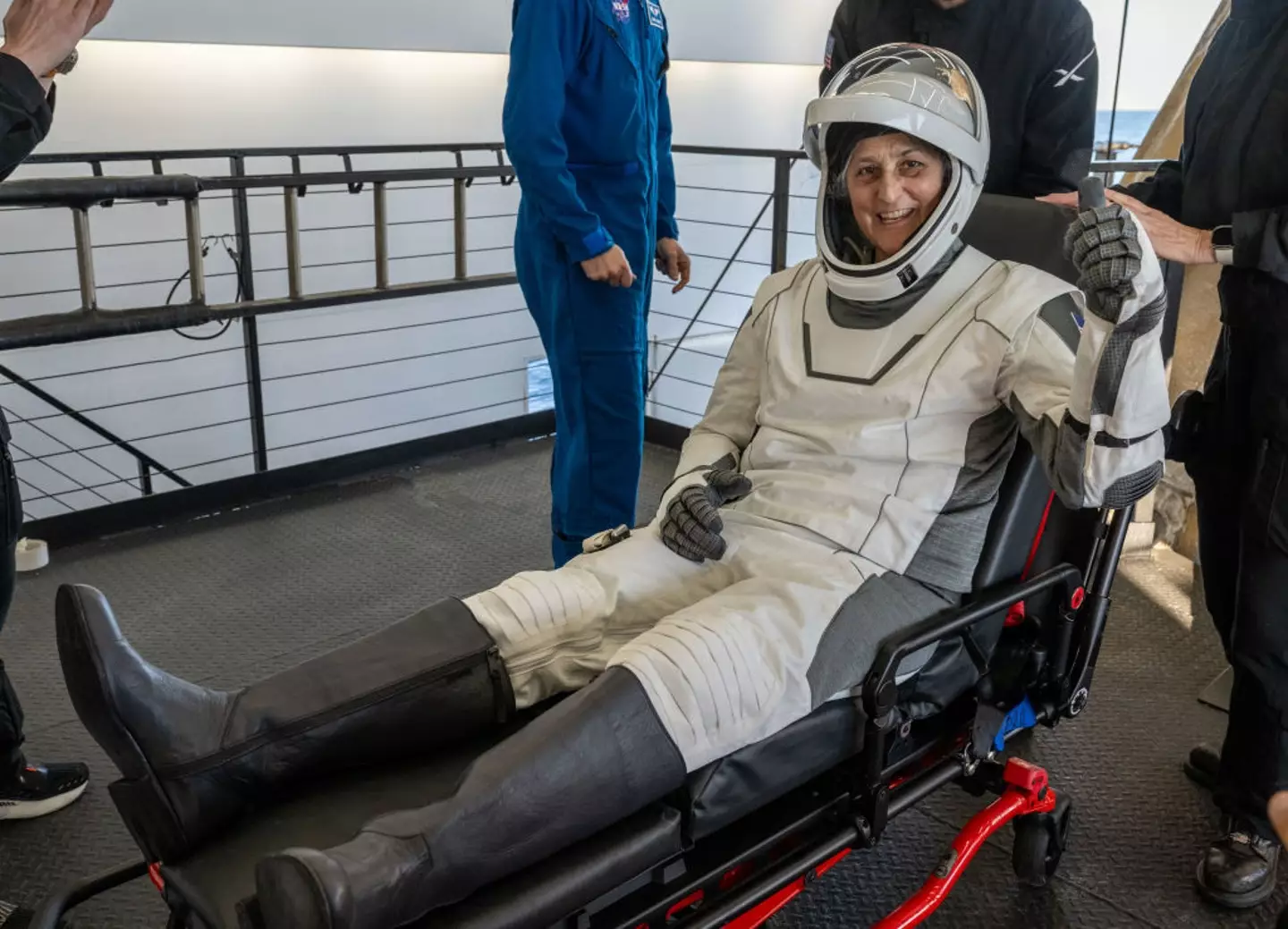

Astronauts are monitored closely by doctors and scientists following their return to Earth (Keegan Barber/NASA via Getty Images)
Your body isn’t used to living in low or zero gravity environments, and thus you can very easily shed significant muscle and also suffer from bone density loss as your muscles – including your heart – don’t have to work anywhere near as hard even if you do hours of exercise every single day.
Yet Williams’ health concerns look fairly mundane compared to retired NASA astronaut Scott Kelly, who upon return from a staggering 340 day stay on board the ISS returned two inches taller than he was a year earlier, as reported by CNBC.
Scott’s case was a particularly intriguing one when it comes to studying the effects of space travel on the human body, as he happened to have an identical twin brother who was also an astronaut.
Mark Kelly, Scott’s twin, was down on Earth during the latter’s lengthy ISS expedition, and measuring him up against his twin was what allowed scientists to discover the bizarre change.
Researchers also conducted a number of genetic tests between the pair of twins, as it’s not exactly common to get a near perfect way to analyze the immediate differences shortly after space travel in two genetically similar test subjects.


Scott grew two inches taller than his twin brother Mark after staying in space for nearly a year (Dimitrios Kambouris/Getty Images for Breitling)
Like almost everything in space though, Scott managed to somehow grow taller due to the effects of gravity on his body. On Earth the disks in your spinal column are compressed and fixed in place, whereas the lack of gravity in space causes these to loosen, expand, and in turn lengthen your spine overall.
This is a particularly prevalent case due to the length of time that Kelly spent consecutively in the environment in space, affording a much greater expansion of his spinal column and therefore a more noticeable increase in his height.
Other bizarre side effects that are caused by the shift in gravity include a hypersensitivity that leads to ‘baby-like’ skin, as your clothes otherwise float above your body when you’re in space, alongside a difficulty learning how to talk again as the tongue naturally floats in low gravity.
Featured Image Credit: Bill Ingalls/NASA / Handout / Getty


NASA astronauts Sunita ‘Suni’ Williams and Barry ‘Butch’ Wilmore safely splashed down off the Florida coast last night, wrapping up an epic nine months in space.
After emerging from the SpaceX Dragon capsule from a 17-hour journey back to Earth, they smiled and waved as the recovery crew came to their aid.
It would be some time before the astronauts reunite with their families as they first need to undergo medical evaluations after spending an extended period in space – and will have a long road of recovery ahead.
The two left Earth in June 2024 for what was meant to be an eight-day mission to test Boeing’s Starliner capsule. But due to technical malfunctions that made the craft unsafe for return, they ended up staying aboard the International Space Station (ISS) for a whopping 286 days.
As lengthy as their mission was, it seemingly doesn’t come close to the record for the longest spaceflight by an American.
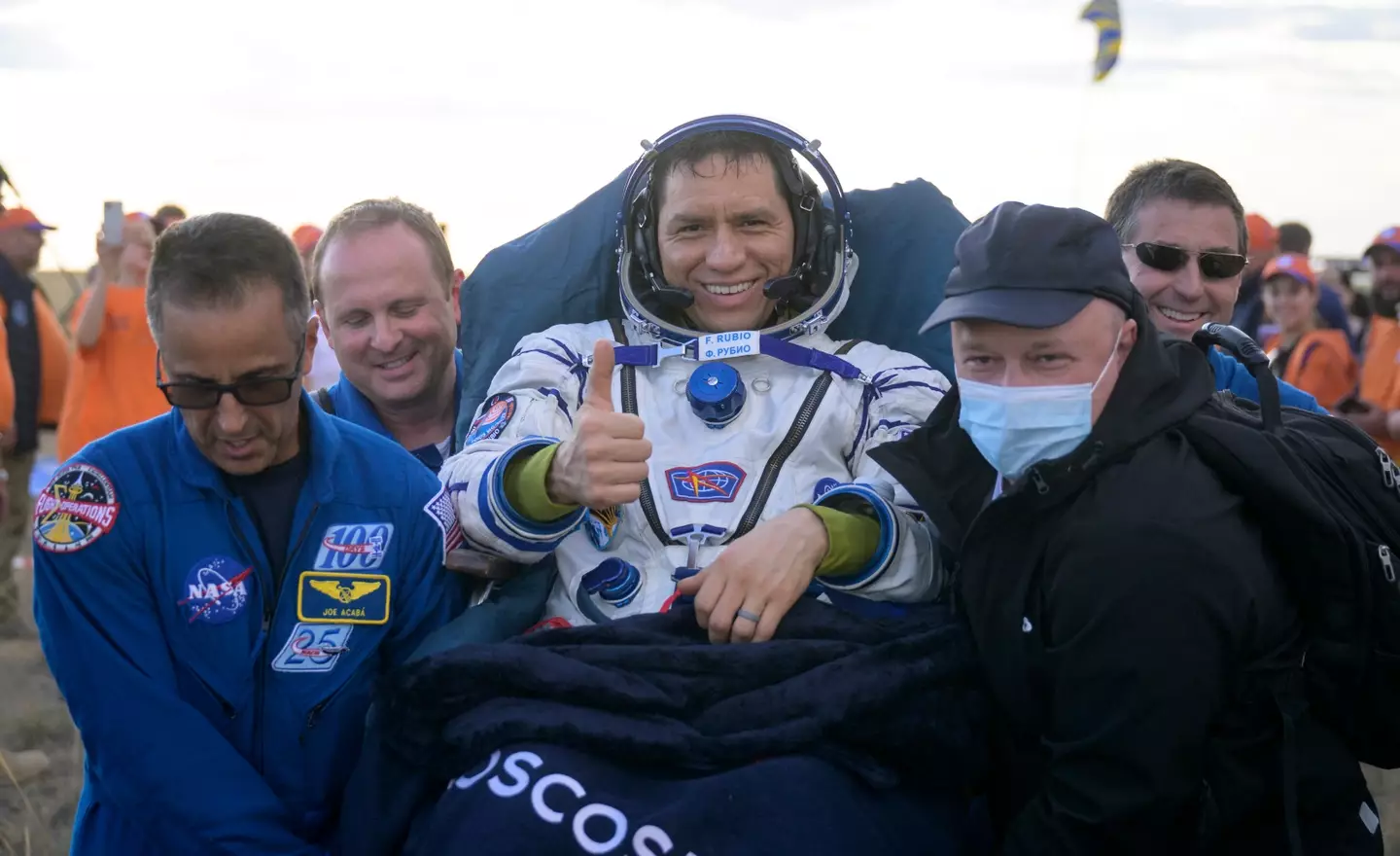

Frank Rubio holds the record for the longest spaceflight at 371 days. NASA/Bill Ingalls
Francisco ‘Frank’ Rubio, a NASA astronaut, flight surgeon, and U.S. Army colonel, holds the NASA record for the longest spaceflight at 371 days.
Rubio launched aboard a Soyuz capsule on 21 September, 2022, along with Russian cosmonauts Sergey Prokopyev and Dmitry Petelin.
They were originally scheduled to return to Earth six months later on 28 March, 2023. However, their spacecraft endured a radiator leak that was likely caused by space debris or a micrometeoroid impact. It was deemed unsafe for transport and so had to be returned to Earth and replaced by another uncrewed capsule, which the trio used to return home.
Once the trio finally touched down in rural Kazakhstan in September 2023, they were pulled out of their Soyuz capsule and carried away as they were unable to walk from the microgravity.
Record-wise, Dr. Frank Rubio’s prolonged mission surpasses the nearly yearlong stints of astronauts Mark Vande Hei (355 days) and Scott Kelly (340 days).
“Frank’s record-breaking time in space is not just a milestone; it’s a major contribution to our understanding of long-duration space missions,” said NASA Administrator Bill Nelson. “He embodies the true pioneer spirit that will pave the way for future exploration to the Moon, Mars, and beyond.”
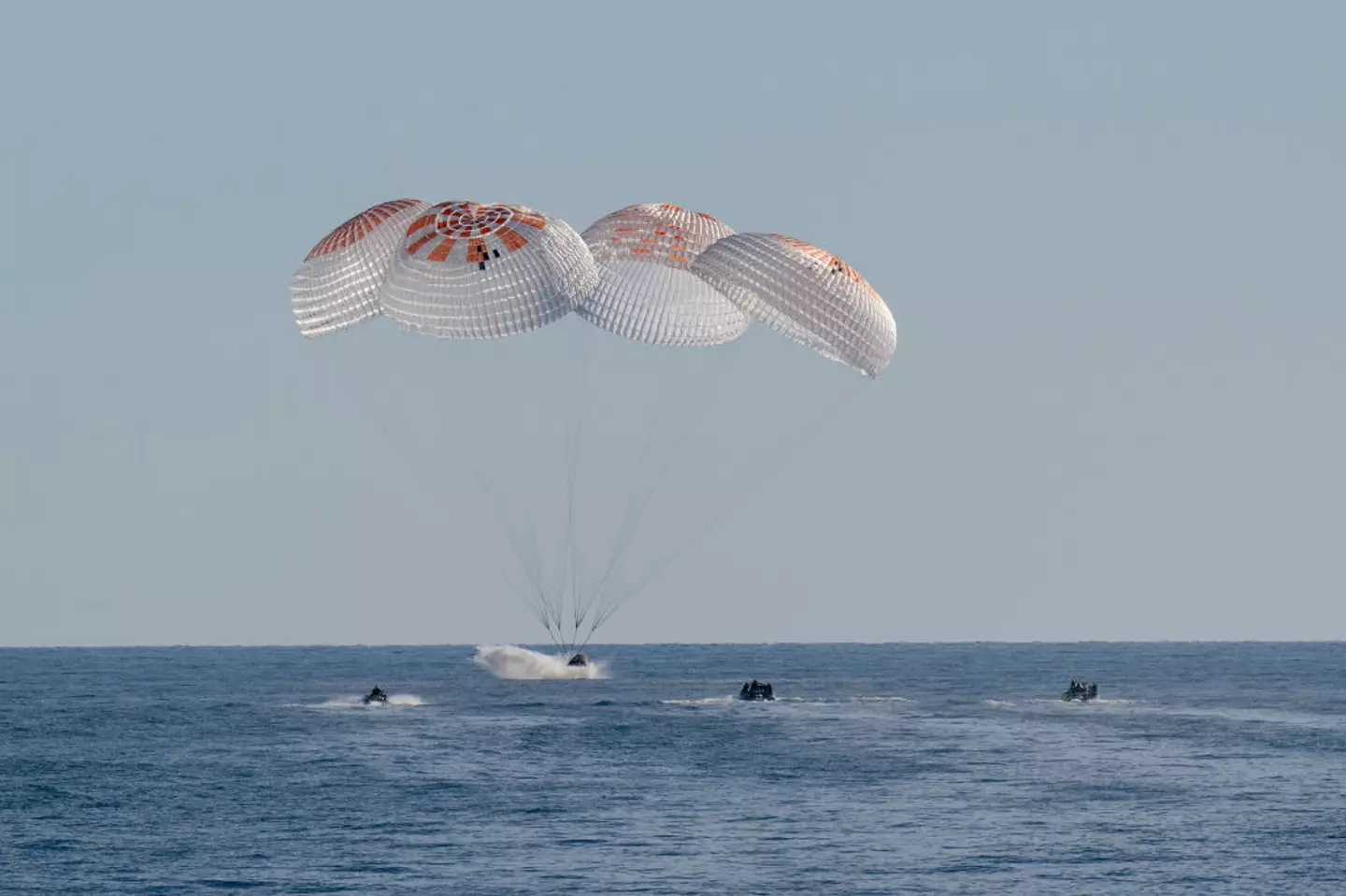

Butch Wilmore and Suni Williams returned to Earth last night after spending nine months in space. Handout / Handout / Getty
Dr. Rubio admitted that it was difficult to be away from his family for so long, but during his time, he had to ‘stay positive’ and focus on the mission.
“You try to just focus on the job and on the mission and remain steady, because ultimately, every day, you have to show up and do the work,” he said.
According to the US space agency, Dr. Rubio completed ‘5,963 orbits of the Earth’ during his record-breaking mission. Among his many scientific experiments in space, one of his favourites was observing how a tomato plant grew in microgravity.
“I love working with that little plant and seeing it grow and develop,” he said.
Featured Image Credit: APHOTOGRAFIA / Contributor / Getty


Spending months in space might sound like the ultimate adventure, but for NASA astronaut Sunita Williams, the experience came with an unexpected emotional toll.
Williams, who was only supposed to be on an eight-day mission, has now been in space for over 270 days after a series of technical failures left her and fellow astronaut Butch Wilmore stranded on the International Space Station (ISS).
Responding to a press question from the ISS on as part of a pre-departure news conference, from 6:06 in the video above: Williams revealed: “the hardest part of being stuck in space wasn’t the weightlessness or the isolation — it was the uncertainty of when she’d be able to come home”.
“The hardest part is having the folks on the ground not know exactly when we’re coming back. It’s been a rollercoaster for them – probably more so than for us,” she added.
Williams and Wilmore launched aboard Boeing’s Starliner on June 5, 2024, for what was supposed to be a quick trip to the ISS. But things quickly went south when the spacecraft experienced multiple technical failures.
NASA later deemed it too unsafe to bring them back, forcing the astronauts to stay aboard the station while alternative plans were made. Starliner was eventually sent back to Earth without them in September, leaving them quite literally without a ride home.
Now, after months of uncertainty, NASA has confirmed that the two astronauts will finally return to Earth on March 19 or 20. But instead of Boeing bringing them back, they’ll be catching a lift with Elon Musk’s SpaceX on the Crew-9 return flight.
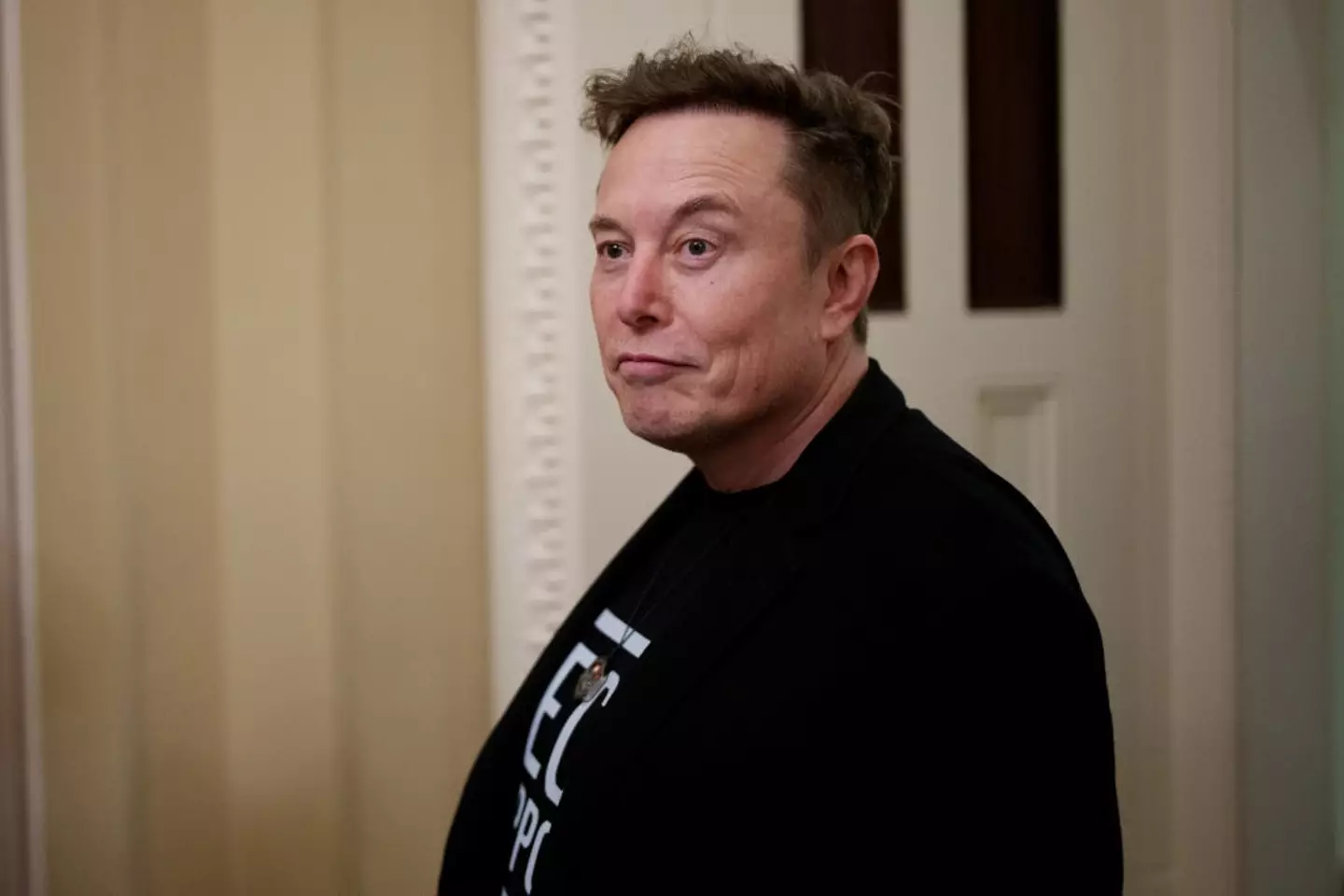

SpaceX & Tesla CEO, Elon Musk (Getty Images)
The extended stay has sparked major controversy back on Earth, with Elon Musk suggesting that the delay was politically motivated. Former US President Donald Trump echoed the claims, accusing the Biden administration of deliberately holding them in space longer than necessary.
Despite the swirling speculation, Williams and Wilmore have largely avoided getting dragged into the politics of it all. When asked about the controversy, Williams simply responded, “We know what we’ve lived up here. We have the utmost respect for everyone trying to get us home.”
Wilmore, however, admitted that he and Williams have been kept in the dark regarding the politics of their situation. Referring to Musk’s claim, he said: “That’s information that we simply don’t have, so I believe him”.
For now, the focus remains on getting the astronauts back safely. After spending nearly a year in space, their long-awaited return is finally in sight.
Featured Image Credit: Joe Raedle / Staff / Getty


It’s the end of an era, as NASA astronauts Sunita Williams and Butch Wilmore are finally back on Earth. Their supposed eight-day mission to space turned into a 285-day stay on the International Space Station thanks to problems with their Boeing Starliner. Although the Crew-9 return vessel has been docked with the ISS since September 2024, Williams and Wilmore had to wait for the Crew-10 relief crew’s arrival to take over from them and Crew-9’s Nick Hague and Aleksandr Gorbunov.
After a couple of false starts, Crew-10 finally arrived on the ISS on March 16 and shared emotional scenes with Williams, Wilmore, and the rest.
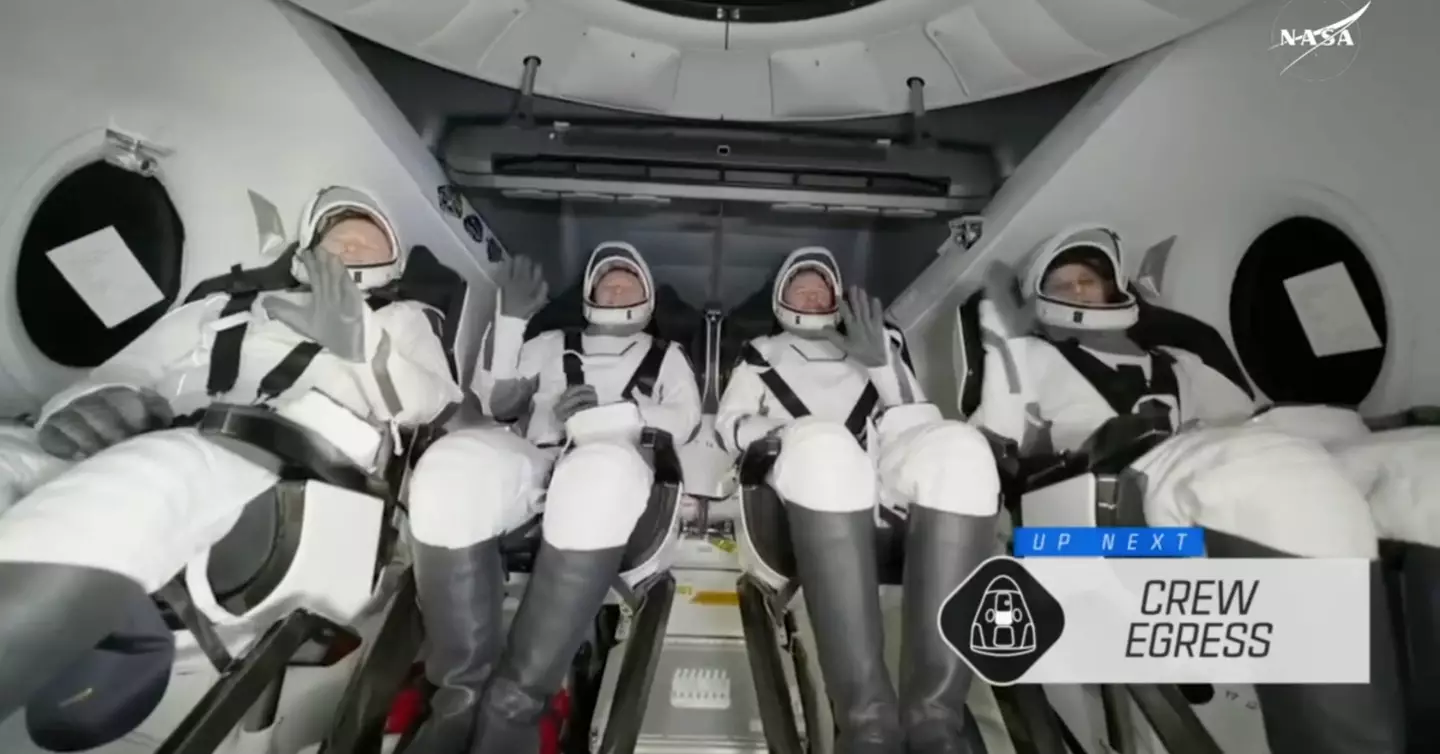

Williams and Wilmore were finally back on Earth (NASA)
Williams and Wilmore had already sent their thanks to President Donald Trump and SpaceX’s Elon Musk, with the pair being vocal about wanting to get the astronauts back as soon as possible. Musk took it one step further and accused the Biden administration of ‘abandoning’ Williams and Wilmore up there for political reasons.
We were told that Williams and Wilmore would make a watery landing off the coast of Florida at 5:57 p.m. EST on March 18, while it was expected they’d be rushed off into a ‘brutal’ recovery regime due to their extended time in space.
With a successful landing on time, Williams and Wimore exited their Dragon craft aboard the Megan rescue vessel but were immediately taken away on stretchers to the private medial quarters.
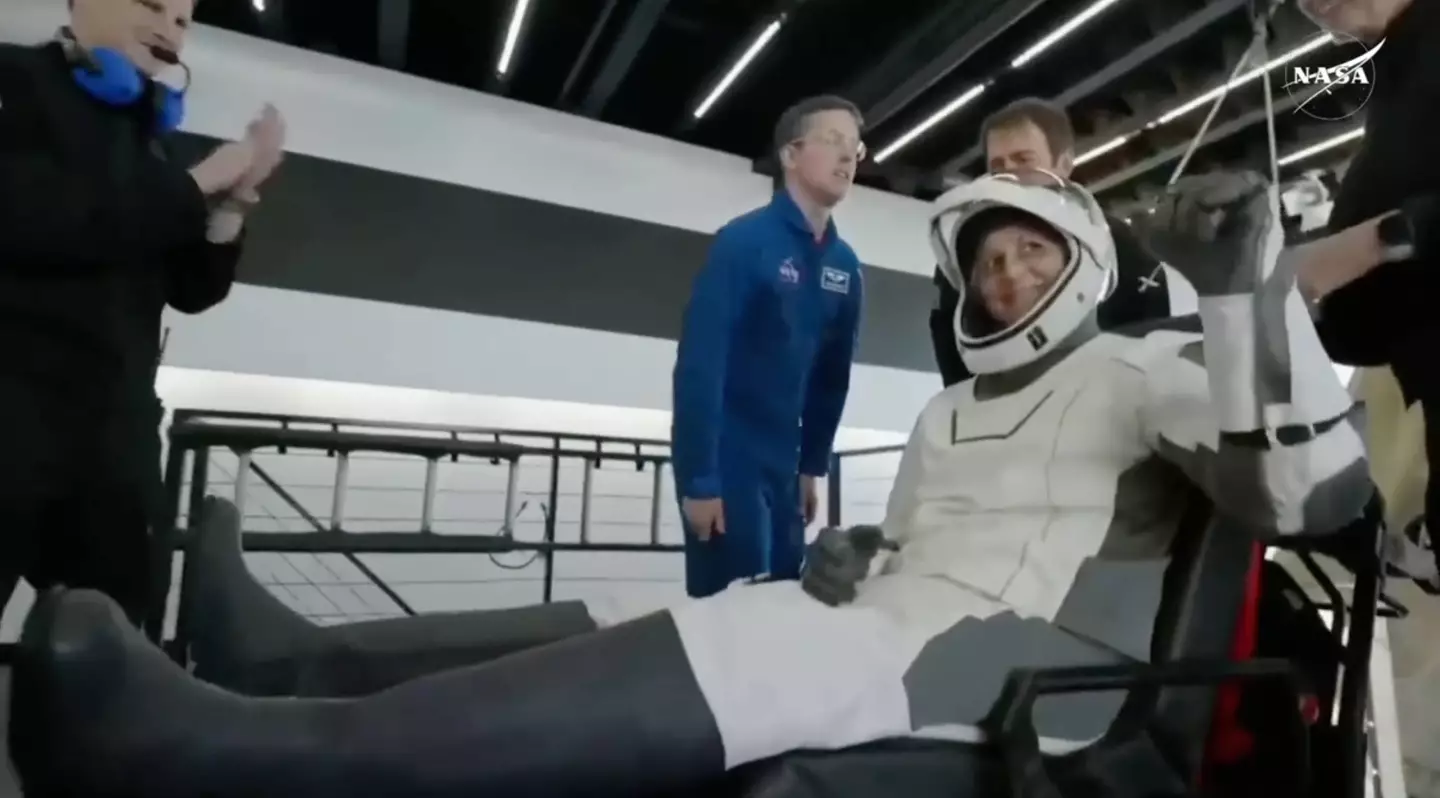

It was all smiles as Sunita Williams was carried away (NASA)
Although it’s common practice for astronauts to be checked after returning from space, Williams and Wimore’s nine-month stay makes them more susceptible to the long-term side effects.
The current record for the longest time an American astronaut has spent in space belongs to Frank Rubio thanks to his 371-day mission from September 21, 2022, to September 27, 2023.
Still, there’s been much debate about the health of Williams and Wilmore, with the former particularly being in the news due to worries about her appearance. Simply put, the human body isn’t designed to spend long periods in space.
Williams had warned she’d lost the ability to walk properly, while a loss of muscle mass, potential weakening of the heart, and osteoporosis are all other possible side effects.
There’s also the fact that the weightlessness of space can cause the shape of your eyeballs to flatten, which can affect the retina and blood flow, leading to changes in how well they can see.
Perhaps the most concerning is astronauts being bombarded with excess radiation, meaning there’s a potential increase in cancer scares.
Despite being back on Earth, the next few weeks and months are sure to be crucial for Williams and Wilmore. They might think they’ve escaped the glare of the media, but something tells us their story has only just begun.
Featured Image Credit: Joe Raedle / Staff / Getty


Suni Williams and Butch Wilmore spent a staggering 286 days in space despite only planning on an eight day trip, and one doctor has revealed exactly how long it’ll take for their bodies to recover following their return to Earth.
Technical issues with both their Boeing Starliner craft and the SpaceX spaceship that was set to rescue them from the International Space Station (ISS) meant that Williams and Wilmore spent an unbelievably long nine months away from their homes.
While they did manage to conduct some fascinating research and undergo a number of spacewalks that will be on any astronaut’s bucket list, they also had to contend with a number of health issues that are expected when you spend that long in low gravity conditions.
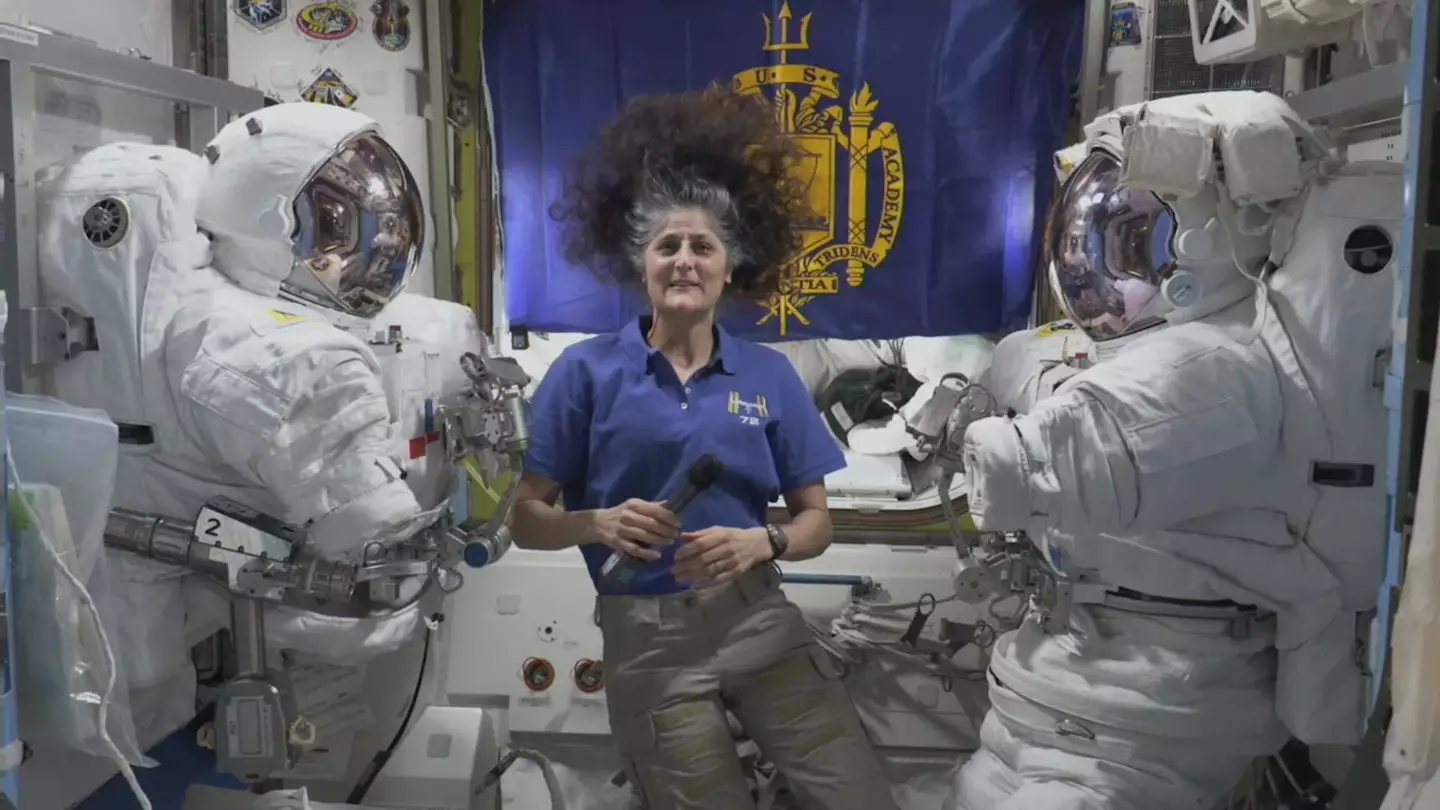

Williams and Wilmore spent 286 days in space, and their bodies will have to adjust to life back on Earth (YouTube/NASA Video)
Many became concerned over photos revealed Williams’ ‘gaunt’ appearance, and while NASA assured everyone that both were fine health wise, this was indeed a natural consequence of living on board the ISS.
Low gravity conditions mean that your muscles have to work far less, and even with rigorous daily exercise it’s still not enough to stop you from losing muscle mass and running into bone density issues.
That’s why both had to be immediately stretchered off to a medical facility following their long-awaited landing off the coast of Florida, and one doctor has revealed exactly how long it’ll take before their bodies return to ‘normal’.
Speaking to Fox News, Weill Cornell Medicine professor Dr. Christopher Mason indicated: “All of it is, at least on some measures… all transient. Most of it is a response to space flight, and usually in a few weeks they’re mostly back to normal. It’s the first few days that are the most really dynamic when they get back to Earth.”
One former astronaut has added a different perspective though, as while a few weeks might be enough to be ‘normal’ from a medical perspective, the actual feeling of being back on Earth takes far longer to get used to.


Both astronauts were immediately stretchered to a medical facility, where they will undergo a six-week physical rehab program (Keegan Barber/NASA via Getty Images)
“I remember my first two words when I came down was, ‘Gravity sucks’,” revealed Jose M. Hernandez, “because your body starts adapting, and you’ve got to recalibrate your vestibular balance system. It’s going to take a couple of months before they feel kind of normal back here on Earth.”
Muscle loss is far from the only side effect that they’ll have to contend with though, as it’s highly likely that they’ll have ‘baby-like skin’ that’s hypersensitive towards clothing as they’ll be used to it floating above their body while on the ISS.
Additionally, former astronaut Chris Hadfield has revealed that staying in space can even affect how you talk: “Right after I landed, I could feel the weight of my lips and tongue and I had to change how I was talking,” Hadfield illustrated. “I hadn’t realized that I had learned to talk with a weightless tongue.”
What has become clear though, at least in the case of Suni Williams, is that this will be the last time that she has to deal with the rehabilitation period, as she’s pointed to the fact that this will likely be her final space mission.
Williams also pointed out while on board the International Space Station that she was trying to remember how to walk again, which shows how drastic the changes astronauts have to deal with that a relatively short period of time away from Earth in the grand scheme of things can have such major ramifications on the basic functions of daily life.
